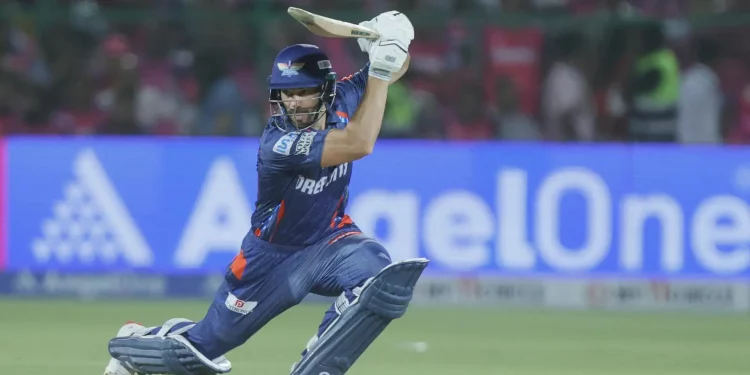Will a lot of South Africans attribute Aiden Markram‘s comeback to the IPL? Not likely. The competition is seen by some as cricket’s Death Star, the event that will end the sport as they know it.
It doesn’t sit well with these unfortunates that the traditional pyramid, which places international cricket at the top and franchise leagues below first-class and even list A level, is outdated and out of step with the new game. Perhaps they haven’t realised how their yearning is melting the ice.
In his last six innings for the Lucknow Super Giants, Markram has amassed four half-centuries. In doing so, he has fended off attacks from Mitchell Starc, Axar Patel, Kuldeep Yadav, Jofra Archer, Mohammed Siraj, Trent Boult, Mitchell Santner, Hardik Pandya, Mahesh Theekshana, and Wanindu Hasaranga.
Players can only expect to be put to the test by opponents of such calibre at ICC events, and even then, they should be able to profit from minnows. Quality is crucial in the IPL. Except for Pakistanis, nationality is immaterial.
Prior to joining the IPL, Markram scored three hundred runs in his final six innings while playing for Sunrisers Eastern Cape and South Africa. However, that lasted for a month. In just 19 days, he has achieved success in India.
Due to the hectic timetable of the event, participants are forced to do or die. During those four innings of 50 or more, he hit 60.26% of his runs in fours and sixes and had a strike rate of 155.78.
Markram is currently performing the butterfly at Olympic standards.
However, not all of the South Africans participating in this year’s IPL have used it as a springboard. Heinrich Klaasen, Ryan Rickelton, Quinton de Kock, and Faf du Plessis each had a half-century before Friday’s match between the Chennai Super Kings and Sunrisers Hyderabad at Chepauk, while Tristan Stubbs and David Miller had none at all.
The fact that Du Plessis has only played three innings and that De Kock’s brilliant 97 not out off 61 for the Kolkata Knight Riders against the Rajasthan Royals in Guwahati on March 26 are mitigating considerations.
Their bowlers, like the majority of South Africa’s hitters, don’t make headlines. With eight wickets at an economy rate of 9.23, Marco Jansen is in first place, although he is far behind Josh Hazlewood and Prasidh Krishna, who have each claimed 16 and Moeen Ali, who has the league’s best economy rate of 6.36.
Before the WTC final against Australia begins at Lord’s on June 11, South Africa will need Markram to stay in the running and Jansen to get his act together. Kagiso Rabada departed the competition after just two games to take care of personal matters at home, so it wouldn’t hurt if he could return.
The narrative has plenty of time to shift between now and the WTC final, which will have taken place 17 days after the IPL final. However, more progressive South Africans who are interested in cricket will wish for the IPL’s power to always remain with their players.







